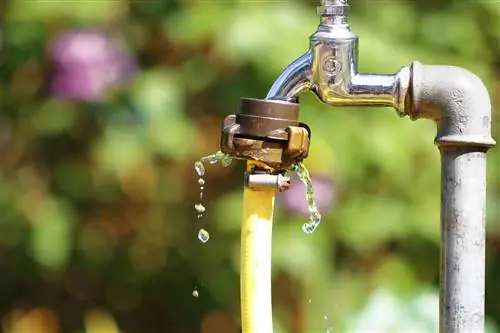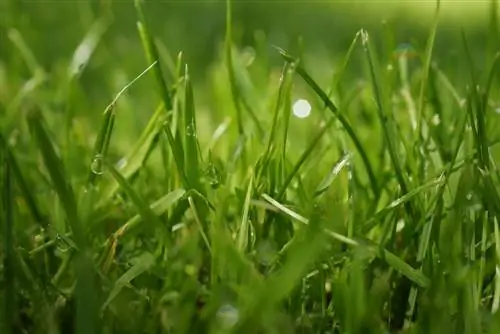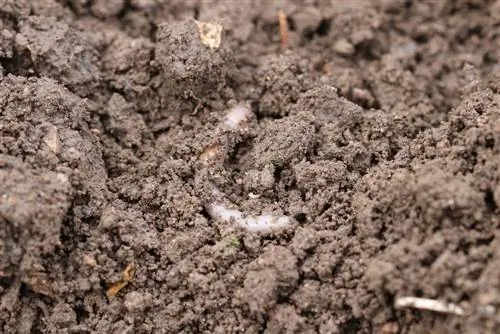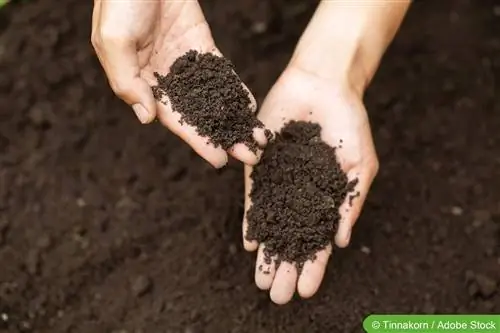- Author admin [email protected].
- Public 2023-12-17 03:39.
- Last modified 2025-06-01 06:48.
For a variety of plants to grow splendidly, good garden soil must store enough water, have a crumbly structure, contain sufficient nutrients and be easy to work with. As a rule, these properties are achieved by the mixture of sand, humus, clay and loam. Here, as so often in life, it's all about the mix. Now, not every hobby gardener enjoys high-quality garden soil. Even if the garden soil does not have ideal properties, it is possible to improve the garden soil with additives and special admixtures.
Soil analysis
But before you start preparing the garden soil, it should be analyzed and tested for its pH value. The following steps are necessary:
- take a handful of soil from the garden
- Pour into a cup and mix with water until a semi-solid mass forms
- take the mixture out of the cup
- form into a roll on a firm surface
Light soil / sandy soil
- is loose, well ventilated and easy to work with
- cannot store water and nutrients for long
- produces less humus because the organic materials break down more slowly
Soil improvement for sandy soils
The easiest and cheapest way is to add plenty of humus to the soil. Manure, compost or green manure are suitable here. Of course, kitchen scraps or green leftovers can also be used. Another option is the clay mineral bentonite. When incorporated into the sandy soil, bentonite improves the storage capacity of nutrients and water.
Sandy soils can also be prepared with green manure plants. Certain plants such as clover, vetch, sunflower, rapeseed or lupins provide shade, enrich the soil with nitrogen and loosen it profoundly.
Preferred plant species
- Sea buckthorn
- Heather
- Lilac
- Rock Pear
- Hazel
- Barberry
- Holly
- Potato
- Radish
- Carrots
- Peas
- Asparagus
- Leek
- Beetroot
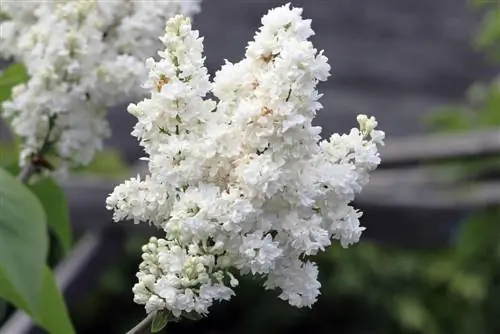
clay soil
- feels smooth and sticks
- Rubbing creates a shiny surface
- has a dense and heavy structure
- Plant roots have difficulty spreading
- Absorption of nutrient s alts and water is made more difficult
- often heats up worse
- Cover the surface with dark compost after sowing
Soil improvement for clay soils
Introduce humus, shredded material and sand into the clay soil. This makes it looser and allows more water and oxygen to pass through. It is also advisable to dig up clayey soils deeply before the onset of winter. This causes water to collect in the cavities.
If the water freezes in winter, it expands and breaks up larger clods of earth. This so-called “frost cooking” contributes significantly to improving the quality of the soil.
Clay soils with waterlogging are improved with drainage. Deep-rooted green manure loosens and aerates soils with a high clay content.
Preferred plant species
- Chestnut
- bird cherry
- Holly
- Hawthorn
- Aster
- Sun Bride
- Suneye
- Silver Candle
- Cherry Laurel
- Roses
- bushberry fruit
- Fruit trees
- Potato
- Zucchini
- cabbage
- Cucumber

clay soil
- offers optimal conditions with good care
- is smooth and supple
- permeable
- Doesn't stick and can be easily formed into a sausage
- loose and nutritious
Soil improvement for clay soils
Before the first frost, the clay soil is dug up so that the loosened pieces of clay can burst open in the event of frost and the garden soil becomes looser. At the same time, sand is worked into the clay soil or at least spread over the clay soil. Sand makes the soil much more permeable. If flowers are to be planted, the soil must be enriched with compost. This not only creates cavities, but also supplies the soil with nutrients.
If vegetables predominate, green manure is applied during the vegetable-free period. Sunflowers and lupins are ideal here because their roots penetrate deep into the layers of the earth. Mowing takes place shortly before the seeds are ripe. The cuttings remain on the ground until it is dug up again before the first frost.
Preferred plant species
- Lilac
- Snowball
- Fat Hen
- Hazelnut
- Ivy
- Christmas Rose
- Cherry tree
- Laurel
- Plum tree
- Potatoes
- Carrots
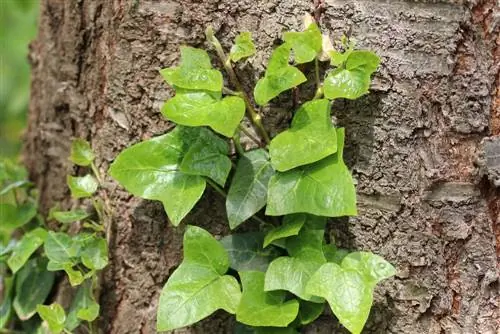
Moorland
The typical moorland can be easily recognized by its dark brown to almost black color. It consists largely of organic matter such as plant remains, some of which have rotted away. Moor soil is often quite poor in nutrients and has a low pH value. Therefore, there are only a few plants that can cope with such acidic soil.
Soil improvement for bog soils
The goal of soil improvement is to raise the pH value and thus increase the nutrient content. In order to simultaneously increase the storage capacity of nutrients, rock dust or bentonite is added to the soil.
Additional doses of lime also raise the pH value. If the value is still below 5.0 after liming once, lime will be used again. Required trace elements and nutrients can get into the soil by spreading compost and stored manure.
Preferred plant species
- Azaleas
- Rhododendrons
- Ferns
- hydrangeas
- Laurel Rose
- Lavender heather
- Cranberry
- native orchid species
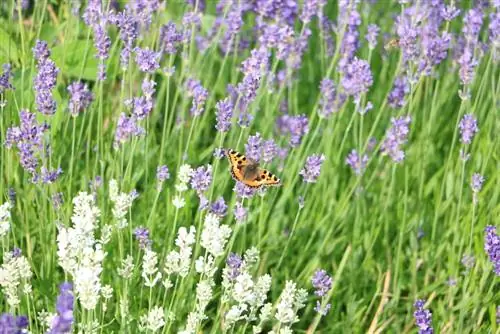
Among the vegetables there is only rhubarb, which can cope with extremely acidic soil.
Test the pH value with a soil sample
In general, plants thrive best at a pH value of 5 to a maximum of 7.5. Lower values lead to deficiency symptoms and diseases in most plants. Exceptions are ericaceous plants, azaleas and rhododendrons.
These prefer a pH value of 4.0 to 4.5. Lime-loving plants such as clematis or boxwood require a pH value above 7.0. In order to maintain the optimal value, it is advisable to use every second year to lime.
How is pH tested?
Special test strips are available commercially that can be used to measure the pH value.
- acidic soil: pH value below 5.5
- neutral soil: pH value exactly 7
- alkaline soil: pH value above 7
Different pH values are desired for the different types of soil:
- Sandy soil: pH value of 5.5
- medium soil: pH value from 6 to 6.5
- heavy clay and loamy soil: pH value of 7.2
Frequently asked questions
How can the water holding capacity of sandy soils be improved?
Sandy soils can be improved by adding bentonite. If the organic clay mineral is too expensive for you, you can alternatively use clay or use mineral and non-clumping cat litter based on bentonite.
Can I incorporate straw into the soil in addition to stable manure?
Straw is by no means an option as it is quickly decomposed by millions of microorganisms. These multiply so much that they remove nitrogen from the soil and the plant shows deficiency symptoms.


